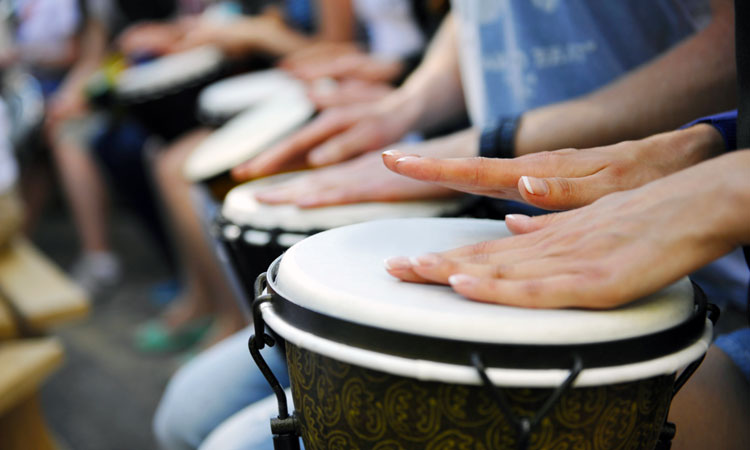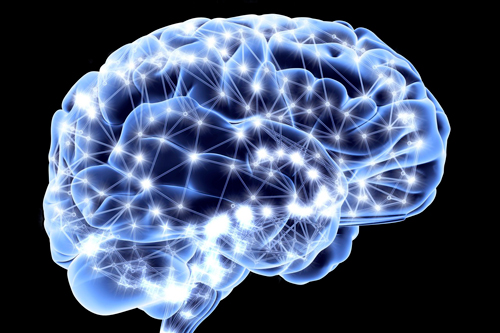
The way Nathan Urban sees it, your brain is full of tiny clocks that have “intrinsic frequency.” The tiny clocks are really each individual cell; the frequency, their unique firing patterns. A neuroscientist at Carnegie Mellon University, Urban explains that the rhythms of your whole brain originate in the firing patterns of each individual cell. Some types of cells fire as slowly as once a second; others fire 100 times as fast. Your brain avoids chaos by synchronizing groups of cells to achieve a communal task. Taken together, the choreographed patterns play a huge role in everything you do, from physical movement to mental gymnastics.
Urban’s recent experimental focus has been on exploring how your brain cells achieve synchrony. What he discovered is that the phenomenon occurs in much the same way as individuals in a large crowd listen to each other’s clapping and slowly synchronize as a whole. While further research needs to be completed to understand why this happens in your brain, the prevailing theory is that it has to do with one of the fundamental axioms of neuroplasticity: neurons that fire together wire together.
The rhythmic sequences that originate in your brain are controlled by cells in your nervous system that reach through the rest of your body to command some of your most basic actions, including, digestion and motility. A brain scientist at Columbia University, Mark Churchland, explains the role of rhythm throughout your body in any given moment by saying, “It’s sort of hard to imagine any way of doing continuous locomotion that wasn’t built on a rhythmic underpinning.” So the brain (rather than sending individual messages to cells to, for example, start the digestion process) sends a message to cells in the nervous system to “activate the digestive rhythm.” Some actions (e.g., reaching) Churchland has discovered can be effected by the sum of two rhythms.
Of course, there are instances when abnormal firing sequences in the brain disrupt the rhythm and lead to tremors or other motor challenges. Rewiring these issues can happen when the internal rhythms of the brain respond to the external rhythms—of music.
Using Music to Sync Your Brain
Lazaro Arbos’s touching audition on American Idol showed the power of music to sync a brain. Interviewed prior to singing, Arbos called his devastating stutter “a roller coaster.” Watching the video of him trying to hold on for the ups and downs of speech would tug at anyone’s heart. But then he begins to sing “Bridge over Troubled Water” and an amazing thing occurs: Arbos’s stutter vanishes. In its place flows forth a beautiful and fluid voice.
The role of music in helping your brain get in sync has been well documented. A useful treatment for speech issues (also highlighted in Gabby Gifford’s recovery from a gunshot wound to the head), music has a powerful effect on brain processing, which can be seen in the way it stimulates the auditory cortex (this allows you to notice notes and melodies, among other components), the cerebrum (which allows you to recall lyrics), the cerebellum (which coordinates body movements), and the limbic system (which connects you to emotions in both melodies and lyrics). Long used as a treatment for such disorders as autism and even Parkinson’s disease, music can produce powerful effects on the brain that change the action of the body. Lucy Bowen McCauley, who leads a dance class specifically for Parkinson’s sufferers, says, “When we use music these… patients become dancers. They look graceful and can move in rhythm.”
With the introduction of recent neuroscience and technological advances, the future of partnering music with the brain looks very interesting, especially through the eyes of one particular Dead Head.
If you’re old enough to have seen the Grateful Dead in concert (yes, that includes me), then you’ve seen Mickey Hart go at the drums behind Jerry Garcia in Hart’s role as the Dead’s percussionist for more than 20 years. Almost 70 now, Hart still makes music and performs to live crowds, albeit in a slightly different genre. Instead of classic rock, Hart offers rock as performance art. In the video he explains, “This mystery mind that we have can be used for other things than dancing and pleasure; it can be used as medicine. That’s where this is all leading. It’s kind of like a rhythm genome project.”
What Hart’s referring to is that through the combination of music, science, and high-tech video components originally designed for gamers, he and Adam Gazzaley, a neuroscientist at University of California, San Francisco, are hoping to validate the science behind music’s healing capabilities.
Hart says, “When you see an arena or even a club all move together and pulse and throb as one—that’s power! When I played a drum for my grandmother who has Alzheimer’s, she spoke my name. She hadn’t spoken in a year. That was power. Where did it come from? How did this do that?”
Gazzaley fitted Hart with a black cap full of electrodes that shows the brain’s communication between neurons via rhythmic oscillations. Hart wears the cap throughout his performances, during which a large video screen shows in real time the parts of Hart’s brain that light up as he plays. In essence,the performance’s light show is controlled by Hart’s brain.
Watching a live model of his brain responding to music, Hart says, “When I see that I play into it and I try to entrain with it, and I try to be in rhythm with it. So I involve in a dynamic interplay with my brain.”
Hart and Gazzaley’s hope is to share their findings with music therapists and advance the approach of using music to heal. Imagine being able to creatively work with your brain to heal your brain. What a long, strange (and exciting) trip that would be!
This short video shows clips, plus interviews with both Hart and Gazzaley about their approach and purpose.
Click here to get inspired by Rose’s easy steps to positively change your mind
Post Disclaimer
This content is for informational purposes only and does not constitute medical advice. Please consult a healthcare professional for any medical concerns.



1 Comment
Baba Pendse
I wish you could present this at an annual meeting of Society of Light Therapy and Biological Rhymths (SLTBR). There is a lot of serious scientific work already done and is under the process about the chronobiological processes, that includes work on all sort of biological rhytms is presented and gives impulses for new work. I personally share a lot of experience whild enjoying the music as described by you. Regards. Baba